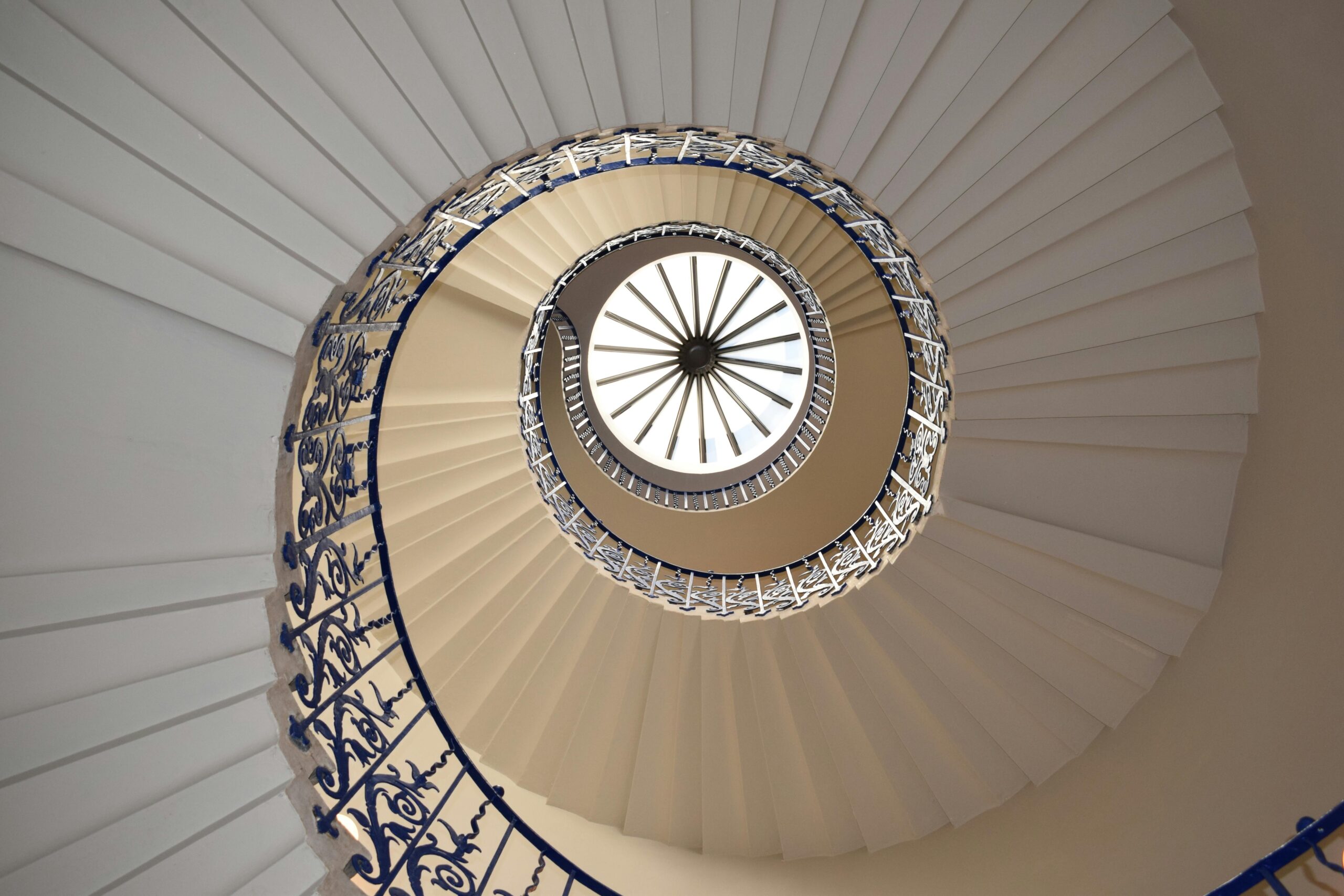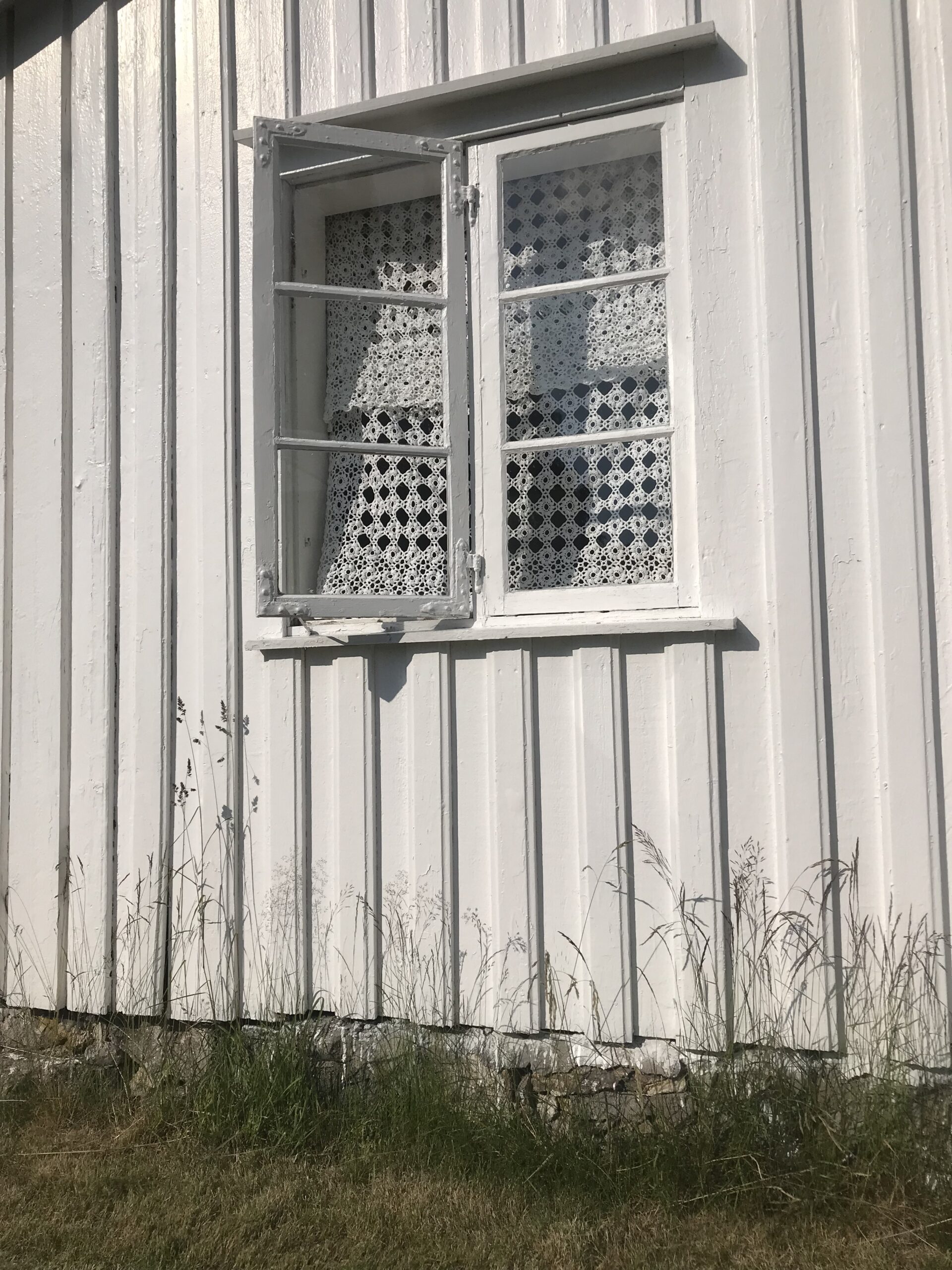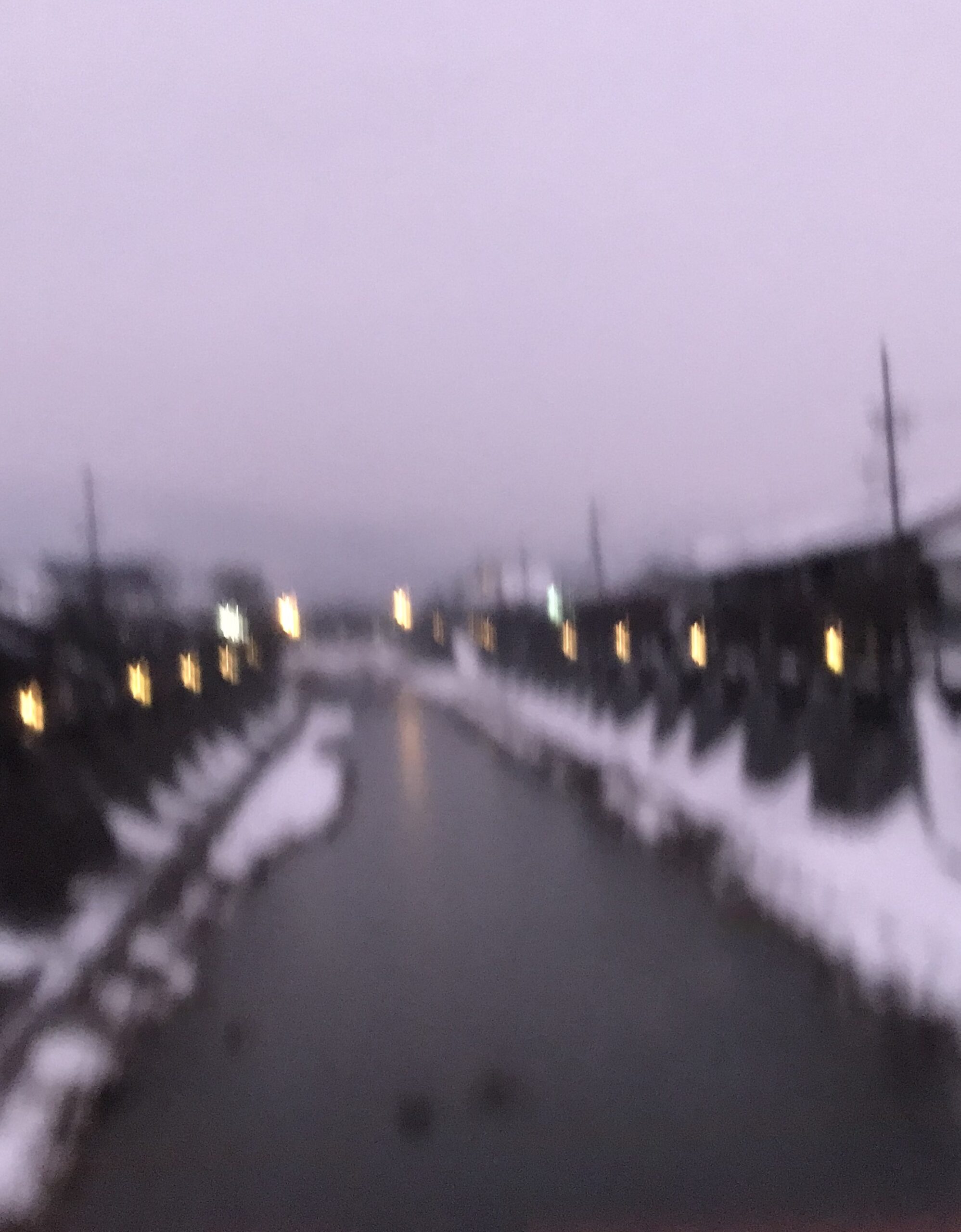In 1927, a Russian architect named Konstantin Stepanovich Melnikov built an astonishing home in Moscow for himself and his wife, son, and daughter. Using affordable materials (building supplies were scarce), Melnikov and his son pitched in alongside several hired laborers to frame and erect the house. A photo taken at completion shows the owner—a slender man dressed in a suit, spats, and top hat—standing proudly in front of his home, with his wife (sporting a plaid coat and matching hat) at his side.
This residence, one of the few single-family dwellings in Moscow that Stalin didn’t raze, is an architectural gem. It has been compared with the radical one-family dwellings of Le Corbusier and Ludwig Mies van der Rohe in Europe, and with Frank Lloyd Wright’s houses in the States. Many Muscovites, however, have no idea of its existence.
Melnikov began his architectural career as a true believer in Russia’s brave new post- revolutionary world. The designer of Vladimir Ilyich Lenin’s sarcophagus, he was hailed as a proponent of exciting new ideas about architecture’s role as a force for social change. Yet a mere decade after he’d offered up his homage to the revolution’s first leader, Melnikov’s remarkable contributions to modern architecture were mocked by Stalin’s culture watchers. At his death, fifty years after Lenin’s, he was just beginning to receive attention and praise at home. His influence abroad, however, was positive and lasting, though few architects have managed to articulate anything quite like his utopian, playful, harmonious vision for urban living. All his designs for public-use buildings—workers’ clubs and public garages—offer what Melnikov referred to as “intimations of the unseen but real world of our feelings,” and the quirky gracefulness of the six clubs actually built is still apparent, despite the fact that most of the structures are now badly deteriorated.
When I encountered it in 1995, Melnikov’s house sat forlornly on Krivoarbatskiy Pereulok, a quiet side street off the bustling Arbat in the center of town. The front facade and roof of Dom Melnikova were encased in scaffolding, and its rear was surrounded by overgrown weeds. Yet it wasn’t empty. Melnikov’s son, Viktor—a man at that time nearly as old as the architect was when he died in 1974—still occupied the house his father had built. Viktor had spent almost his entire adult life there.
I’d moved to Moscow in the spring of that year with my then-husband, who’d been making frequent business trips to Russia since the late 1980s. When a consulting opportunity required his full-time presence in Moscow for a half year, I decided to put my freelance editorial work on hold and accompany him on what sounded like quite the adventure. Perhaps, I reckoned, I could get traction on my own writing by shelving that of other people for a little while.
Our planned time in Russia mushroomed into eighteen months. In the fall of 1996, I returned to the States. My husband didn’t come back with me; our marriage had carried us as far as it could. I remember putting the key into the lock of the front door of the house in Washington, D.C., which I’d shared with my husband for over a decade. Despite all my jiggling, the key didn’t work. My husband had had the locks changed a few months earlier, when our tenants left, and neither of us had remembered I’d need a new key.
Home had become a word without a referent.
During my first few months in Moscow, I spent hours on my own, wandering the city, often without aim. These weren’t just idle strolls; I was attempting to shed the frustration of getting nowhere with a novel—my second—which I’d begun writing in the States. My first novel was making the rounds in search of a publisher, a process I knew would take time and might well turn out to be fruitless.
It struck me that Muscovites were enacting their personal and collective dramas on a stage set gone flamboyantly amok. This wasn’t my first time in Moscow—I’d gone for a brief visit in the early 1980s—yet the city was notably different. Endless construction projects disrupted the already out-of-control traffic; sidewalks often degenerated abruptly into rubble, forcing pedestrians to detour into car-jammed streets. The noise level necessitated constant shouting. Each day I came home gritty, coated with dust. While the physical chaos made some kind of sense, little else did. I recalled Moscow’s grim orderliness during pre-perestroika times, when all the residents had been in essentially the same existential predicament. There’d been almost nothing to buy—even vodka wasn’t easy to come by—and not much to do except talk, though politics was generally off-limits as a topic. Life was tough but predictably so: this seemed to be the consensus.
Now, though, elderly pensioners were selling their own household goods in metro stations while the young girlfriends of newly rich gangsters ambled around in Versace miniskirts. Residents over the age of fifty looked stunned or exhausted; those under thirty looked like they were on amphetamines. Everything was changing very fast and, to a great many Russians, incomprehensibly.
I longed for someone who could help me make sense of the frenetic city and, too, address my difficulties with my writing. This desire was, I knew, preposterous. What was I supposed to do—approach somebody on the metro platform and ask: Why is this place so chaotic, and why am I so stuck?
One day in July of 1995, an eighty-one-year-old Russian artist stepped into the breach.
My then-in-laws, who were visiting my husband and me in Moscow, had read about Dom Melnikova and wanted to see it.
The four of us took the metro and walked for quite a while on the noisy Arbat. When we finally arrived at the house (our map didn’t show the little street on which it sat, let alone the structure itself), several workmen were hammering away on the roof. We rang the bell and waited until the gate was opened by an elderly man whom we took to be one of the laborers. I stepped up and, in my very poor Russian, asked for the owner.
The elderly man answered me in French: I live here. This is my father’s house.
Surprised, I responded in the language he offered me. Your father? You are the son of Konstantin Melnikov?
He smiled at my confusion, then responded: Yes, I am Viktor Konstantinovich Melnikov. I am a painter. Come in.
We spent a half hour with Viktor. After taking us (fairly quickly and without fanfare) around the house, he brought out a few photos of his parents. Then, at our prompting, he showed us some of his own artwork: watercolors, a few oils. By this point we were all slightly shocked: the house itself was a marvel, and in it was an elderly but evidently active artist. I asked if it would be possible to return the following week, to see more.
Oui, he said, and promised to make tea.
So I returned—this time by myself, as my husband was working and his parents had gone back to the States.
In a conversation begun over tea, Viktor and I discovered that we both liked soup. I offered to make him some minestrone, which he’d never heard of. Thus commenced a ritual: Every three or four weeks, I would bring him a pot of homemade minestrone and some bread, cheese, and wine. Viktor would make kasha and tea. For dessert, he’d produce something sweet (chocolate, to which he seemed addicted, or bread and jam).
Then he’d ask what I felt like looking at. We’d go to the room where he stored his work; I’d pick out a carefully wrapped bundle from among the stacks and piles of drawings and paintings that covered the floors. Viktor would unwrap my bundle and set up a makeshift easel on the dining room table. Together, we’d gaze in contented silence at each sketch or canvas. Now that works, he’d say, smiling. Or (still smiling), That’s not quite right, is it? If I’d done something more like this, instead…
His fingertip would hover and dance above the work, redoing what his eyes saw freshly.
Sometimes we’d ascend the spiral staircase to the third-floor studio to view his current work in progress, a large oil canvas. In it, two figures facing one another at either edge of the canvas were emerging from what felt like a snowstorm. Their shapes were barely discernible.
The painting’s tones—shades of white and pink—were at once tender and disturbing. They hinted at blood, just as the poses of the two figures hinted at both connection and separation.
I watched this particular canvas transmute over many months. Viktor told me he had no idea how it would complete itself. He’d been working on it for several years and was clearly tickled that it wasn’t done—that he had no sense of when it’d be done. That it might never be done.
He wanted the doing of it.
Dom Melnikova is two overlapping cylinders of differing heights. The cylinder facing the street (the shorter of the two) is cut by a vertical plane of glass, which forms a huge window for the living room on the second floor. On the ground floor are a vestibule, dining room, kitchen, bathroom, and two other small rooms in the back. In earlier times they were actually three: the bedrooms of Viktor and his sister, and the workroom of his mother.
Below ground is a cellar. During the worst days of the war, Viktor told me, the entire family lived there. I tried to imagine one of the early twentieth century’s most notable architects tucked with his family in a dark, cold corner of the cellar, which Viktor declined to show me. No doubt it held memories he didn’t wish to unearth.
In addition to Dom Melnikov’s living room (whose ceiling is about twenty-five feet high), the second floor of the house, reached by a spiral stairwell, contains a large sleeping room, as Konstantin Stepanovich called it. Twelve hexagonal windows provide a diffuse light. Using partitions that do not reach the ceiling (lower than that of the living room), the architect divided this room into three separate sleeping spaces containing only beds. Each sleeper was invisible to the others. I noticed that only one bed remained—a trundle-style model of ornately carved mahogany, meticulously dressed in worn cotton and wool bed linen. Its formality struck me as whimsical in so spare a chamber.
Throughout the second floor, the walls had been painted in strange, pale washes of color: violet, light green, buttery yellow. The living room was at one time the site of frequent gatherings of friends and fellow artists; Viktor told me his paintings and Konstantin’s sketches used to cover its walls. During the months when I was a regular visitor, the entire living room was bare, save for a large metal supporting pole that kept the ceiling from weakening. (Although the building’s construction was sturdy, it had been done on the cheap, using only bricks and wood—state-imposed rationing had placed other materials off-limits. Years of deterioration had compromised the structural integrity of the house.)
A central staircase spiraled up to the final floor, to the studio where Konstantin and Viktor often used to work together. It was a circular space nearly fifty feet across, with perhaps forty hexagonal windows. The light in this space was ever-changing yet always gorgeous. On bright afternoons, I watched as diagonal shadows fell and crisscrossed on the floor; on gray days, the softness of the light, muted yet not dim, made me imagine I’d entered a tranquil chapel, though it was clear this space wasn’t a site for organized worship—for organized anything. A balcony gave onto a flat-roof terrace. Standing on the balcony with my back to the street and gazing inside, I imagined (and this came with just a hint of dizziness, not scary but exhilarating) that I could coast across the studio’s airiness like a bird.
Every time I entered Dom Melnikova, I couldn’t believe I was in Moscow. I longed to linger in each room of the house, to absorb all the magical eccentricities of the place. A more elegantly provocative structure couldn’t be imagined—which, I expect, was why the Stalinists had lost their initial enthusiasm for the house and its maker. What were they supposed to do with a dwelling that seemed to taunt: Well, and what are you going to make of your life?
For Konstantin Stepanovich, architecture was a mode of painting. For his son, painting was a form of writing.
Viktor Konstantinovich’s work consisted largely of landscapes and still-lifes that offered a narrative of rural life, one in which church and nature were synonymous. He also did portraits and studies of the human figure, including several large, unnerving canvases of his father, weakened by illness, as the architect stood or sat in the third-floor studio of Dom Melnikova.
With his art, Viktor had learned to cultivate enthrallment. One spring afternoon in his studio, I stood with him about ten paces away from a series of watercolors he’d painted in Kamchatka in the far east of Russia. He’d journeyed there in his mid-sixties, after his parents’ deaths—hiking on his own for weeks, carrying his survival on his back: clothing, water, food, charcoal, paper. It was extremely cold. After long days during which he trudged around the craters of several vast Kamchatka volcanoes, he spent nights sketching in the huts he shared with workers at various seismological stations.
Those watercolors had something lunar about them. Looking at them, I began to apprehend the extent of Viktor’s sense of loss. He’d been married and divorced early in his life, and although he’d subsequently traveled extensively within Russia, he’d always returned to his childhood home. With the deaths of his parents came inner disorientation. To regain his bearings, Viktor removed himself from Moscow and journeyed to the far reaches of Russia. His Kamchatka watercolors threw me: Was this beauty or terror? If terror, it was nothing like Moscow must have experienced in the days of Stalin; rather than oppression and deception, this was release. Viktor had opted to go straight to the Russian heartland—to an isolated, eruptive landscape where danger and loss were wholly physical and natural, unhitched from human treachery. His paintings delivered Kamchatka’s realities as no photograph could, and held me wordless. People call these watercolors abstract, he said to me one evening, but this is just what it’s like out there.
A few days before leaving Moscow, I visited Dom Melnikova for the last time; within the week, I’d be returning to the States. Packed in my bags were a few mementos of my time in Moscow and an unfinished, messy draft of a novel. As Viktor and I ate our soup and drank our tea, I told him I had to leave Russia, to go home and be by myself. He nodded, asking no questions, though my own head was full of them: Home to what? What home?
For a brief moment I was tempted to say more—to dump the contents of my heart onto the table and ask, Can you sort out this mess? My marriage has failed, and I’ve no idea what I’m doing with my writing. But the urge passed. Viktor and I hadn’t ever shared much about our personal lives. He did know I was a writer: shortly after we met, I’d told him I had finished one book and was working on another. At that he’d smiled and nodded, and I sensed he viewed me as a fellow traveler—in it for the long haul. On that final evening with him in Dom Melnikova, I wasn’t in any case looking to Viktor for answers to my emotional distress. What I sought instead was a particular kind of reinforcement. Every day, Viktor did what mattered most to him; like his father before him, he remained committed to his work as an artist regardless of the personal and political hardships and obstacles he’d faced and was still confronting. That dedication to artistic practice as its own reward was the model I needed, the sustenance I knew would see me through whatever awaited me.
After we’d finished eating, Viktor led me to the room where he stored his work. We spent the remainder of our evening as we’d always done—looking at paintings and drawings, talking about which ones worked and puzzling over the ones that didn’t. Asking aloud how to proceed, what might be done, why not try this or that. Relishing the questions.
Viktor died ten years after I left Moscow. Dom Melnikova was turned into a house-museum in 2014.
Now and then, certain details—the scent of kasha cooking on Viktor’s small stove, his low-toned chuckle, a diamond-patterned lattice of shadows across the studio’s floor—rise up sharply in memory, bringing back one of the most peculiarly satisfying human connections I’ve been fortunate to experience, brief though it was. Viktor and I met during a sort of lull—the Cold War behind us, the Putin and Trump regimes not yet upon us. A false lull, of course; yet those eighteen months in Moscow were for me a boon. Within a year of my return to the States, I got divorced, published my first novel, moved to New York, and began making actual headway with my work on the second book. On days when I felt the familiar blockages, I’d summon an image of Viktor’s finger hovering and dancing over one of his drawings. Or of the two of us standing in the studio’s ever-shifting light, gazing at the pair of figures in that large oil painting—his smile letting me know they, too, would soon be changed.
Home remains for me a word without a clear referent.
There’s my homeland, the United States, where I now have no fixed abode, and there’s Castiglione del Terziere, a tiny medieval village in a part of Italy where I live with my husband—a place new to us both, though he’s Italian. It doesn’t matter which place I’m in: I’m not fully at home in either, and never will be. That’s not a complaint but an observation, and nationality’s got nothing to do with it. Only the natural world can be my home, though I know better than to call it my shelter. None of us can; that illusion has been punctured.
As for houses, I’ve spent good chunks of time in quite a few, and have loved a small handful of them. Yet no domicile has ever provided me with an abiding sense of home. When I was young, my family moved several times; as an adult, I’ve resided in three different American cities. Long before Italy—during two separate periods when I lived abroad (first in England, then in Russia)—I changed lodgings multiple times. Thus I’m always startled when, for somebody else, home means house.
Viktor created his art in the only place that could ever be home for him—the house his father built.
He resided in a visionary dream-made-real. But the city in which Dom Melnikova was located didn’t see it as such. After designing his iconoclastic public structures in the 1920s and early 1930s, Konstantin Stepanovich Melnikov was excluded from additional city-planning projects, and his existing constructions were allowed to fall into disrepair. Shortly before his death, he received an honorary title from the House of Architects, after decades of being ignored—far too little too late, Viktor told me.
That Dom Melnikova is now part of Moscow’s network of public museums is perhaps all the architect’s son might’ve hoped for. But the structure hasn’t been well tended; it needs serious conservation and renovation. Current political realities make it unlikely that a century-old house built by a radical Russian architect will be renovated anytime soon. Who knows if Dom Melnikova will survive? There will surely be voices calling for its destruction. I imagine that what keeps it alive for now is the light it gathers and stores within, a stockpile of radiance.
Martha Cooley is the author of three novels—The Archivist, a national bestseller published in a dozen foreign markets; Thirty-Three Swoons; and Buy Me Love—and a memoir, Guesswork. Her essay collection, My Little Donkey, will be published in November. A professor emerita of English at Adelphi University, she lives in Italy.




